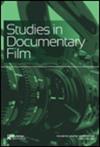A review of the nematode assemblages of the genus Perameles (Peramelidae), Australian bandicoots, held in the South Australian Museum
IF 0.8
4区 综合性期刊
Q3 MULTIDISCIPLINARY SCIENCES
Transactions of the Royal Society of South Australia
Pub Date : 2023-08-02
DOI:10.1080/03721426.2023.2239547
引用次数: 1
Abstract
ABSTRACT A total of 210 vials of nematodes collected from four species of Perameles (representing 15 individuals of P. bougainville, 83 of P. gunnii, 54 of P. nasuta and 19 of P. pallescens) held in the Australian Helminthological Collection of the South Australian Museum were examined. Nematodes were identified and parasite assemblages of the four hosts were compared. Using only the number of nematodes identified to species as an indicator of diversity, the nematode community of P. bougainville was the most depauperate (4 species) followed by P. gunnii (11 species), P. pallescens (12 species) and P. nasuta (20 species). None of the species were found in all four hosts. Excluding P. bougainville, Sorensen’s index of similarity showed that P. gunnii and P. pallescens had the least similar, 0.26, and P. pallescens and P. nasuta the most similar, 0.50, nematode communities. Linstowinema warringtoni Smales, 1997, Mackerrastrongylus peramelis (Johnston & Mawson, 1938) and Peramelistrongylus skedastos Mawson, 1960 were found in three hosts, P. gunnii, P. nasuta and P. pallescens. Each of the four hosts had a unique species profile: four species of Physaloptera being found in P. nasuta, three in P. pallescens, one in P. gunnii and none in P. bougainville. Of the trichostrongyloids, Mackerrastrongylus peramelis was the most prevalent in P. pallescens and Peramelistrongylus skedastos in P. gunnii and P. nasuta. The influence of nematode collection techniques, sample sizes and host geographic range and ecology may have had on the assemblages we observed is discussed.南澳大利亚博物馆收藏的澳洲土刺麻麻属(麻麻科)线虫群综述
本文章由计算机程序翻译,如有差异,请以英文原文为准。
求助全文
约1分钟内获得全文
求助全文
来源期刊
CiteScore
1.40
自引率
12.50%
发文量
17
审稿时长
>12 weeks
期刊介绍:
Published since 1880, the Transactions of the Royal Society of South Australia is a multidisciplinary journal that aims to publish high quality, peer-reviewed papers of particular relevance to Australasia.
There is a particular focus on natural history topics such as: botany, zoology, geology, geomorphology, palaeontology, meteorology, geophysics, biophysics, soil science and environmental science, and environmental health. However, the journal is not restricted to these fields, with papers concerning epidemiology, ethnology, anthropology, linguistics, and the history of science and exploration also welcomed.
Submissions are welcome from all authors, and membership of the Royal Society of South Australia is not required.
The following types of manuscripts are welcome: Reviews, Original Research Papers, History of Science and Exploration, Brief Communications, Obituaries.

 求助内容:
求助内容: 应助结果提醒方式:
应助结果提醒方式:


